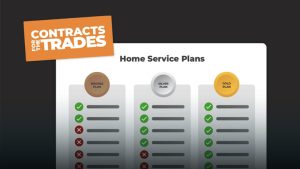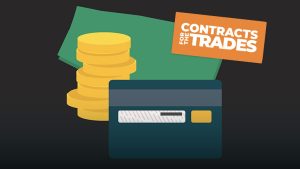Creating Predictable Success with Monthly Recurring Revenue
March 27, 2024 | Read: 8 minutes

At the end of the day, owning and operating a successful business requires you to think about the amount of money it’s earning.
While you may love the work you do and care most about the customers, utilizing monthly recurring revenue will ensure you’re running a business that’s set up to achieve the consistent growth you desire.
However, the challenges that come with growing a business in this way can seem to come in waves.
At first, you’re struggling to cobble together your first few employees. Then, as the ball starts rolling, things appear to get easier and your company grows; you hire 10 – 20 employees without much difficulty.
This can ease the pressure, but can also lead to a business owner’s expectations rising.
As time goes on, they’ll come to expect that the business will bring in more customers and profit each year…
…and that’s exactly when stagnation tends to hit! To get over this hurdle, you need a brand new idea to generate revenue!

What is Monthly Recurring Revenue?
Monthly Recurring Revenue (also known as MRR), is a figure for field service businesses that represents the predictable and repeatable revenue generated every month from your customer base subscription payments.
This type of reliable income stream is extremely impactful for creating financial stability and will allow your businesses to plan for the future with confidence.
Three Reasons Why Monthly Recurring Revenue is Important
There’s an endless number of reasons why calculating and tracking MRR is important, our three favorites are listed below:
1. Monthly Forecasting
One of the primary benefits of generating monthly recurring revenue is the ability to forecast income with a high degree of accuracy.
Unlike one-time transactions, MRR provides a steady and predictable stream of revenue – enabling your business to plan budgets, allocate resources optimally, and make informed decisions based on solid financial knowledge.
2. Performance Tracking
MRR serves as an important Key Performance Indicator (KPI) for maintenance businesses.
Tracking MRR allows companies to gauge the success of their subscription models and identify trends in customer acquisition and retention.
This data-driven approach empowers businesses to make strategic adjustments and optimize their offerings for sustained growth.
For example: many HVAC companies offer annual or seasonal maintenance plans to ensure the perfect performance of heating and cooling systems.
These plans typically involve regular inspections, cleanings, and tune-ups, spread out over the course of a year.
By tracking MRR specifically for these maintenance agreements, HVAC businesses can gain valuable insights into:
- Customer Acquisition: Is the MRR from new maintenance agreements increasing? This indicates successful marketing and sales efforts.
- Customer Retention: Is the MRR from existing agreements staying steady or declining? A decline might suggest churn and a need to improve customer service or plan offerings.
- Pricing Strategy: Is the current pricing for maintenance contracts generating sufficient recurring revenue? Analyzing MRR can help determine if price adjustments are necessary.
3. Peace of Mind
Monthly recurring revenue creates peace of mind for your business AND the customer.
For your business, MRR means security. With it, you’ll have an easily identifiable revenue stream that makes your baseline income clear. This stability will allow your businesses to make better purchasing decisions, plan ahead for slower periods, or better understand how to navigate economic issues.
By understanding your recurring revenue, it removes the constant pressure of wondering how much your business will make each month, or across the year.
On top of that, when a customer knows they’re under contract and will get the recurring services that they need, they can rest easier and they won’t have to spend time or energy thinking about the systems in their home or place of business.
Similarly to your business, a customer can manage their own budget more easily too, all thanks to a clear breakdown of the monthly or annual service fee that you charge.
How To Calculate Monthly Recurring Revenue
Calculating monthly recurring revenue is a straightforward process that is as simple as summing up all subscription fees from active customers within a given month.
We’ll discuss finding the right price point below – but it’s important to note that if you have a good, better, best pricing structure – you’ll need to factor that into your calculations.
The Challenges of Offering a Subscription-Based Service
While the benefits of Monthly Recurring Revenue are evident, businesses also face challenges in implementing and maintaining a successful subscription model.
Difficulty Managing Volume
As the number of clients under contract grows, so does the complexity of managing them.
Handling a high volume of customers requires efficient systems and processes to ensure a seamless experience. Implementing customer management systems becomes crucial to avoid operational bottlenecks and maintain service quality.
Acquiring and Retaining Customers
Subscription businesses thrive on customer loyalty. However, acquiring new subscribers and keeping existing ones around can present difficulties.
Bringing in new customers requires strategic marketing and advertising investments. Balancing customer acquisition costs with subscription revenue should be one of the first calculations you make to maximize profitability.
Finding the Right Price Point
You may want to undercut your competitors, but it isn’t a good idea to undervalue your services and/or products.
Your pricing should be attractive to customers while also generating enough revenue to cover operational costs (and then some).
It should accurately reflect the value proposition of your subscription and the benefits it offers customers.
Having Field Technicians Sell Maintenance Agreements
While you might not think of your technicians as salespeople, there’s no reason why they can’t be!
Armed with their experience, industry knowledge, and a solid understanding of fundamental sales skills, they can be effective salespeople in their own right.
Since technicians are regularly face-to-face with clients and already have full knowledge of the maintenance agreements, they are the best ones to upsell a client on a recurring contract.
They should remind customers that waiting till something needs repairs and neglecting a regular service on their equipment or home can be costly: often much more than a maintenance plan.
As the manager, having an impactful new hire training program and providing regular feedback as field technicians grow in their careers will give them the confidence they need to help you build an overflowing revenue stream.
Having your techs break down the monthly costs for your recurring service programs compared to the costs of not having it over time is one way to sell clients on the need for a certified maintenance agreement.
We’ve touched on the good, better, best model above, but again: offering a tiered level of coverage options can be a great way to help customers.
Choice can help them feel more comfortable with the cost and you can create plans to manage all sorts of needs, and so help a broader range of customers, too.
Read More: How to Boost Your Service Business With Customer Financing
Understanding Profit Margins
Is it better to have a high-profit margin or a low profit margin?
It might seem like the obvious answer is a high-profit margin, but in field service and maintenance, things are not always clear-cut.
Depending on the services you offer, you could have a High-Profit Margin or a Low-Profit Margin (or even an average profit margin).
More often than not, some jobs will fall within the first (e.g. heat pump installation), while others in the second (service checks).
But after calculating your profit margin for each specific job you offer, you should be able to get a better sense of how you compare – first and foremost to your costs – and then to similar businesses in the industry and area.
Never start with the latter, as you don’t know what corners your competitors might be cutting to offer the lowest possible prices.
Using Commusoft to Manage Monthly Recurring Revenue Contracts
Commusoft empowers field service businesses to streamline operations from top to bottom and maximize the benefits of recurring revenue contracts.
Here’s a glimpse into our powerful software and how it will simplify your MRR management:
- Automates Invoicing and Payments: We can eliminate manual billing and even send invoices automatically based on contract terms, ensuring timely payments and predictable cash flow.
- Flawless Customer Management: Easily consolidate information in a customer database software – including contact details, service history, and payment records, in a centralized location. This means your technicians can always access the customer information they need while in the field!
- Inventory Management: Track and maintain optimal field service inventory management for parts and materials required for any recurring maintenance services. Imagine a business where it’s impossible to lose track of any inventory!
- Detailed Reporting: Gain valuable insights into your MRR performance with insightful reports. Use reporting & dashboard software to track key metrics like customer acquisition cost, churn rate, and average revenue. You can then use these insights to identify areas for improvement and optimize your subscription model for long-term success.
By using Commusoft, field service businesses can effortlessly manage their MRR contracts, optimize service delivery, and achieve predictable financial growth.
Get started today by reaching out to us or clicking the banner below!

Anthony Vattimo
Thanks for checking out the Commusoft blog - I’ve been helping business owners improve their strategies for a few years now, so I hope you were able to take something away from the content I’ve written. Feel free to continue exploring the blog - or reach out to us with any questions!











